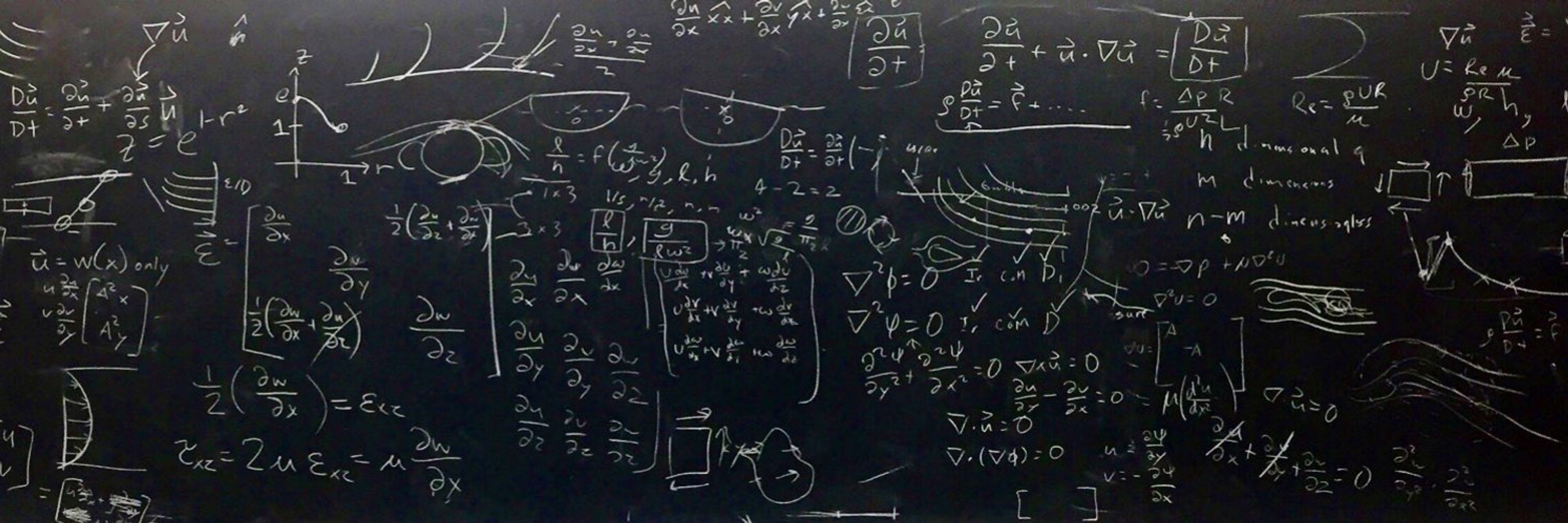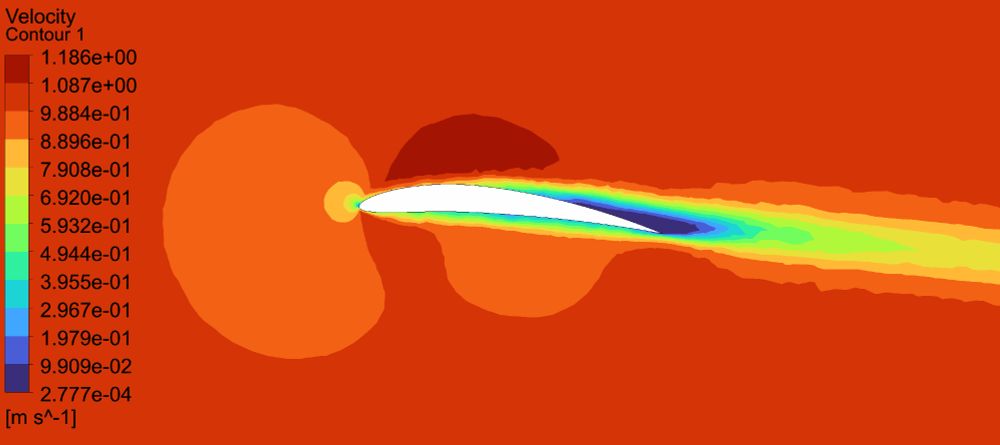
They’ve done amazing work in the face of great adversity and fear. What a privilege it is to help them.

They’ve done amazing work in the face of great adversity and fear. What a privilege it is to help them.
Here's a 2-D simulation of a layer of air (red) below a layer of water (blue) in a closed container. As air is lighter, buoyant forces cause the interface to be unstable, leading to the complex flow shown here as the air eventually rises to the top.
Here's a 2-D simulation of a layer of air (red) below a layer of water (blue) in a closed container. As air is lighter, buoyant forces cause the interface to be unstable, leading to the complex flow shown here as the air eventually rises to the top.
As time goes by, the cylinder rotation begins to affect the flow in the whole tank, and droplets start to drift to the right!
As time goes by, the cylinder rotation begins to affect the flow in the whole tank, and droplets start to drift to the right!
As the fluid near the airfoil flows past it, it becomes deflected downwards by a pair of counter-rotating vortices off its back end.
As the fluid near the airfoil flows past it, it becomes deflected downwards by a pair of counter-rotating vortices off its back end.


A thread:
A thread:
This is "vortex shedding" in 2-D flow past a cylinder; a pair of symmetric counter-rotating vortices develop in the back, which then destabilize to form a long, oscillatory, transient wake. #fluidmechanics
This is "vortex shedding" in 2-D flow past a cylinder; a pair of symmetric counter-rotating vortices develop in the back, which then destabilize to form a long, oscillatory, transient wake. #fluidmechanics
I'm hoping to upload the code for a few of these on GitHub, once I feel it's polished enough for public viewing. Hopefully won't take too long!
I'm hoping to upload the code for a few of these on GitHub, once I feel it's polished enough for public viewing. Hopefully won't take too long!
Matches quite well except when h/r >> 1!
Matches quite well except when h/r >> 1!


Do the empirical equations we use for finding the stress concentration factor in the bar below match the results we'd get from doing finite element analysis?

Do the empirical equations we use for finding the stress concentration factor in the bar below match the results we'd get from doing finite element analysis?
Tough to feel as if this sort of thing matters in the new Age. Logic fights volition and electrochemistry. Let's see what wins.

Tough to feel as if this sort of thing matters in the new Age. Logic fights volition and electrochemistry. Let's see what wins.

(Not sure if that Reynolds transport theorem statement is correct, though.)

(Not sure if that Reynolds transport theorem statement is correct, though.)
This is one of the key issues with irrotational flow!
This is one of the key issues with irrotational flow!
The flow below is creeping flow, where frictional effects dominate. Particles that get close to the sphere slow down drastically due to the no-slip condition.
The flow below is creeping flow, where frictional effects dominate. Particles that get close to the sphere slow down drastically due to the no-slip condition.
This is one of the key problems of using irrotational flow in fluid mechanics.

This is one of the key problems of using irrotational flow in fluid mechanics.
I’m so lucky I get to do what I do.

I’m so lucky I get to do what I do.
As a result, the max. abs. value of the numerical approx. converges onto a single number, the max. abs. value of the analytical solution, as the grid becomes finer.

As a result, the max. abs. value of the numerical approx. converges onto a single number, the max. abs. value of the analytical solution, as the grid becomes finer.
Consider this plot of the "solution's" max. abs. value vs. the no. of grid points for this problem. The value just keeps going up as the grid becomes finer!

Consider this plot of the "solution's" max. abs. value vs. the no. of grid points for this problem. The value just keeps going up as the grid becomes finer!
But this can't possibly be converging onto a solution as the resolution increases, because there is no solution!

But this can't possibly be converging onto a solution as the resolution increases, because there is no solution!
Here's the numerical "solution" a computer determines for this BVP on a five-point grid:

Here's the numerical "solution" a computer determines for this BVP on a five-point grid:

